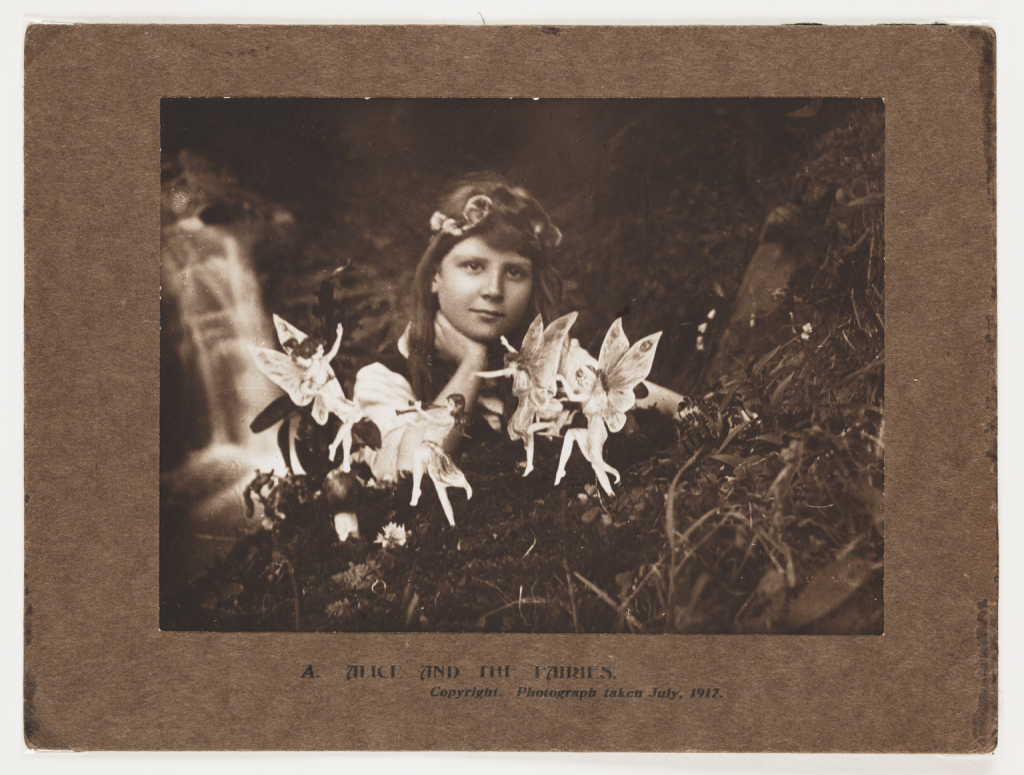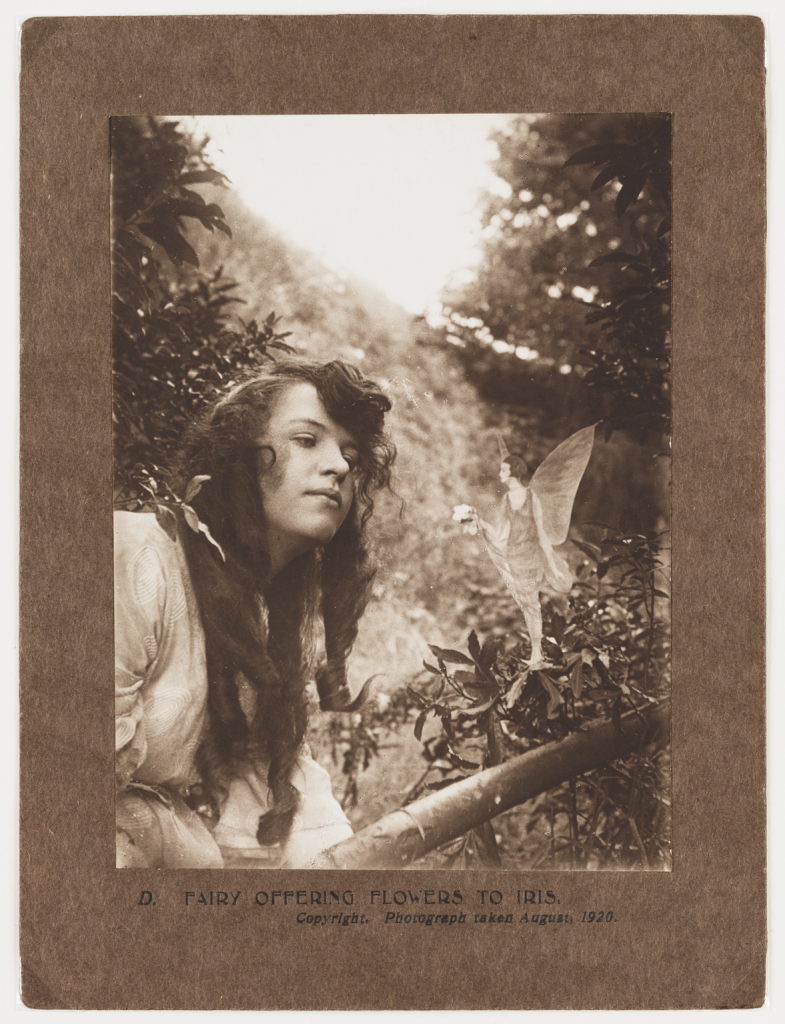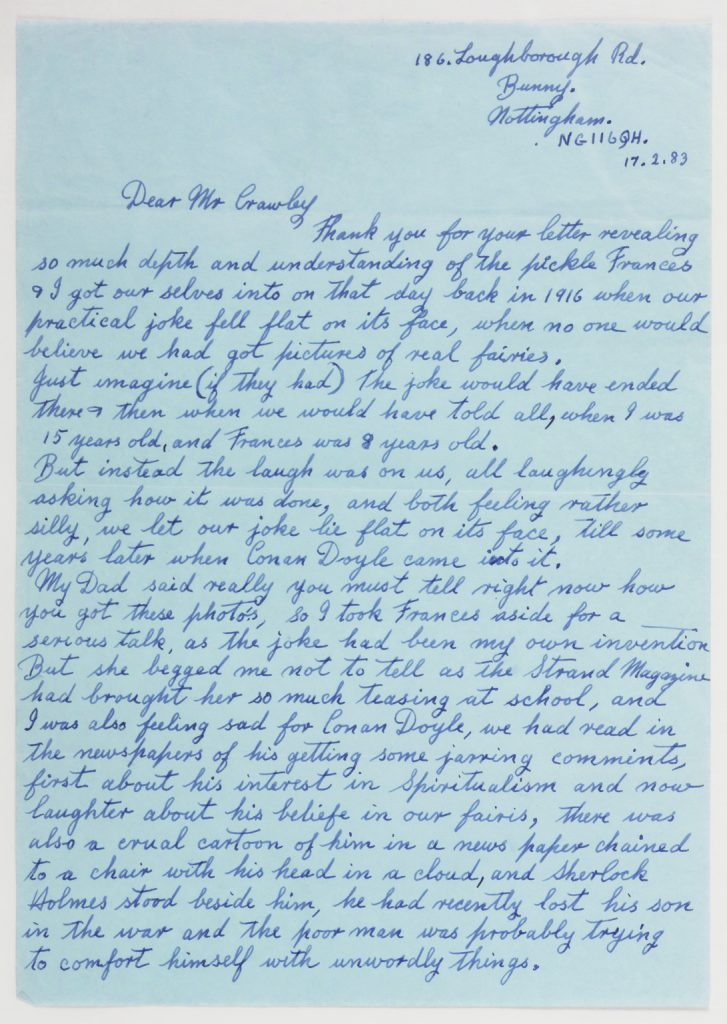The series became known as the Cottingley Fairies photographs. Elsie, who was 15 at the time, saw it as a practical joke to play on adults; Frances, then 10, wanted to justify herself—her parents had scolded her for saying she fell into the beck while playing with fairies.
The photographs of the ‘Beck Fairies’, as the girls called them, went on to become one of the most famous examples of image manipulation in photography. The fairies were actually drawings by Elsie, secured in the ground and to branches with hatpins.
By the 1920s, adults in public life had taken up the cause of the photographs to suit their own purposes—and anxieties. Sir Arthur Conan Doyle, the creator of the Sherlock Holmes stories, decided to believe in the fairies and the ‘truth’ of the images.
Frances and Elsie, out of respect for the hoodwinked, chose to retain the secrets of the fairies until the 1980s, by which time the true origins of the world-famous Cottingley Fairies photographs had remained a mystery for over 60 years.
A children’s film, FairyTale: A True Story, which tells the story behind the photographs, premiered in Bradford in 1998.
‘Alice and the Fairies’

A photograph of Frances Griffiths (1907–1986) taken by her cousin Elsie Wright (1901–1988) using her father Arthur’s Midg quarter-plate camera. This photograph is the first in the ‘Cottingley Fairies’ series.
Frances, posed in the family garden, stares past a group of four dancing fairies into the camera. One of the fairies plays a pipe. A small waterfall tumbles into a ‘beck’, a dialect word for stream, in the background.
‘Alice’ was probably the name given to Frances by Sir Arthur Conan Doyle (1859–1930) in an attempt to conceal the girls’ identity when he published the photographs.
‘Fairy Offering Flowers to Iris’

A photograph of Elsie Wright taken by Frances Griffiths in August 1920. A fairy stands on a tree branch offering Elsie a small bunch of flowers.
After the first two fairy photographs had appeared, ‘experts’ demanded further proof. Edward Gardner—a leading Theosophist fascinated by fairies, who had authenticated the earlier photographs—travelled to see the cousins.
Gardner gave Elsie and Frances two new cameras, with secretly marked photographic plates to detect any tampering. He asked them to take more fairy photographs, of which this was one.
This fairy’s 1920s hairstyle attracted much comment at the time. Sceptics argued that the fairy kingdom was unlikely to be in step with the latest human fashions.
The camera

This quarter-plate ‘Cameo’ camera, manufactured by W Butcher & Sons in London in 1915–1920, was used to make a ‘second phase’ of Cottingley Fairy photographs between 1918 and 1920.
The camera is on display in our Kodak Gallery, along with the quarter-plate ‘Midg’ camera (also manufactured by W Butcher & Sons) which Elsie and Frances used to make their first two photographs in 1917.
Elsie’s letter

This letter was written by Elsie to photographic journalist Geoffrey Crawley in 1983. Crawley had written a series of articles in the British Journal of Photography about ‘That Astonishing Affair of the Cottingley Fairies’ (1982–1983), prompting Elsie, one of the photographers, to write to him.
Elsie expressed her pleasure at Crawley’s work and her desire to reveal the truth, in her own words, about how the photographs were taken—more than 60 years after the event.

Elsie drew this fairy in later life, during her discussions with Geoffrey Crawley.
Elsie and Frances never understood why so many people believed in the Cottingley Fairies. Frances had a copy of ‘Princess Mary’s Gift Book’ (1915), and the girls were inspired by the fairy illustrations inside to make their own versions. To set up the original photographs, the girls secured their cutout fairies in the ground, or to trees, using hatpins.

Sprites from the fairy kingdom pose among the grasses by Cottingley Beck.
This is the only photograph over which Frances and Elsie disagreed in later life. Until she died, Frances, who took the photograph, insisted that it was genuine. However, in a letter to Geoffrey Crawley written in 1983, Elsie revealed that all five photographs were faked.
I went to the beck and was really surprised at the two photos i took that day . Would love to send them to you .
I’m quite curious what you captured!